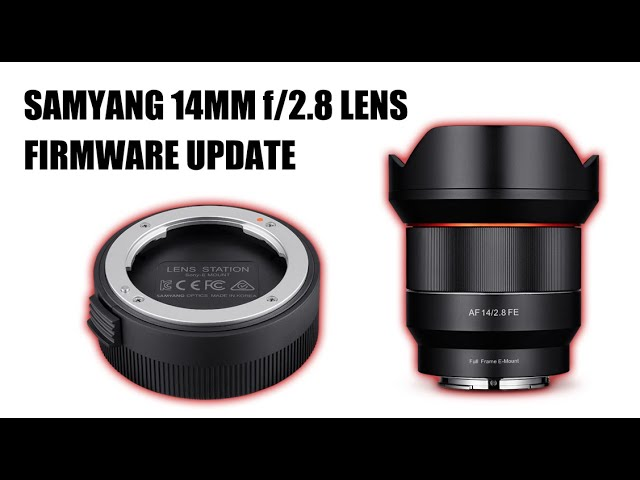Samyang Lens Firmware Tutorial (Step-by-Step)
- Talha
- Aug 29
- 3 min read

Modern lenses are more than just glass and mechanics; they often include advanced electronics that require occasional updates to improve performance. Samyang, known for producing high-quality and affordable lenses, provides firmware updates to fix bugs, enhance autofocus performance, and improve compatibility with newer camera bodies. For photographers in Pakistan and worldwide, keeping your Samyang lens firmware up to date ensures you get the best results. This step-by-step tutorial will guide you through the process of updating your Samyang lens firmware safely and effectively.
Why Update Samyang Lens Firmware?
Firmware is the software that controls how your lens communicates with the camera. Updates are released to address common issues and to enhance performance. Benefits may include:
Improved autofocus speed and accuracy
Enhanced compatibility with new camera bodies
Better stability when shooting video
Bug fixes for rare technical issues
Keeping firmware current ensures your Samyang lens works at its full potential.
What You Need Before Starting
Before updating, make sure you have:
Samyang Lens Station – a dedicated USB dock designed for AF Samyang lenses.
A compatible Samyang AF lens – only autofocus lenses can be updated via the Lens Station.
Samyang Lens Manager software – available for download on Samyang’s official website.
A computer (Windows or Mac) with a stable internet connection.
Step-by-Step Samyang Firmware Update Tutorial
Step 1: Install the Samyang Lens Manager
Go to the official Samyang website and download the latest version of the Lens Manager software. Install it on your computer by following the on-screen instructions.
Step 2: Connect the Lens to the Lens Station
Detach the AF lens from your camera body and mount it onto the Samyang Lens Station. Then, connect the station to your computer using the provided USB cable. Ensure the connection is secure to avoid interruptions during the update.
Step 3: Launch the Lens Manager
Open the Samyang Lens Manager software. The program will automatically detect the connected lens and display its current firmware version. If the software does not recognize the lens, check the USB connection or reinstall the software.
Step 4: Check for Firmware Updates
Once the lens is detected, click on the firmware update option. The software will check online to see if a newer firmware version is available for your lens model.
Step 5: Update the Firmware
If an update is available, click the update button. The process may take a few minutes. Do not disconnect the lens or close the program during the update. Interrupting the update may cause errors.
Step 6: Complete and Verify
After the update is finished, the software will notify you. Safely disconnect the Lens Station from your computer and remount the lens onto your camera. Test the lens to ensure autofocus and other functions are working correctly.
Tips for a Smooth Update
Always use the official Lens Manager from Samyang’s website to avoid compatibility issues.
Make sure your computer battery is charged or plugged in to prevent interruptions.
Avoid updating in the middle of a project—do it when you have time to test the lens afterward.
Keep your Lens Station clean and free from dust to maintain stable connections.
Common Issues and Fixes
Lens not recognized: Try another USB port or reinstall the Lens Manager.
Update fails midway: Restart the software and repeat the process. If the issue persists, contact Samyang support.
No updates available: Not all lenses receive frequent updates. If your lens is up to date, the software will notify you.
Conclusion
Updating your Samyang lens firmware is a simple process that can greatly improve autofocus performance, camera compatibility, and stability. With the Samyang Lens Station and Lens Manager, photographers in Pakistan and beyond can ensure their lenses stay optimized for modern shooting conditions. Following the steps outlined above will keep your gear performing at its best, allowing you to focus more on creativity and less on technical limitations.

Comments